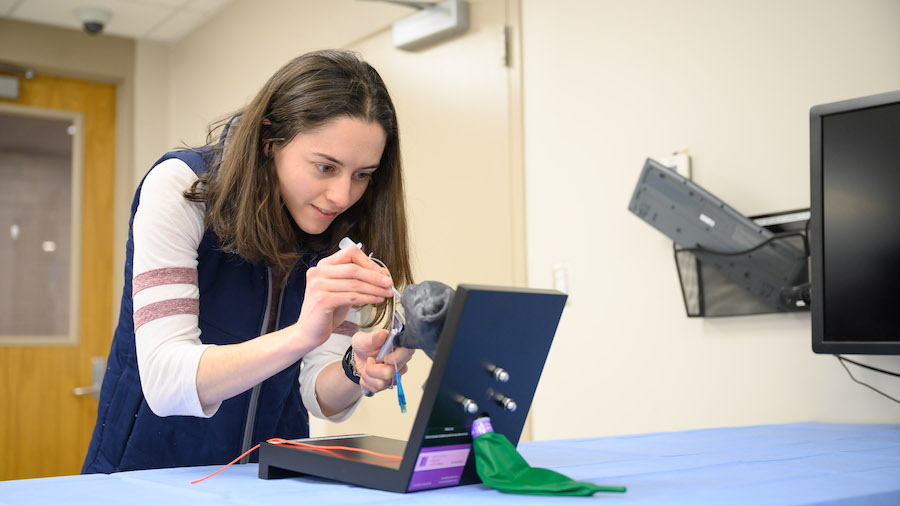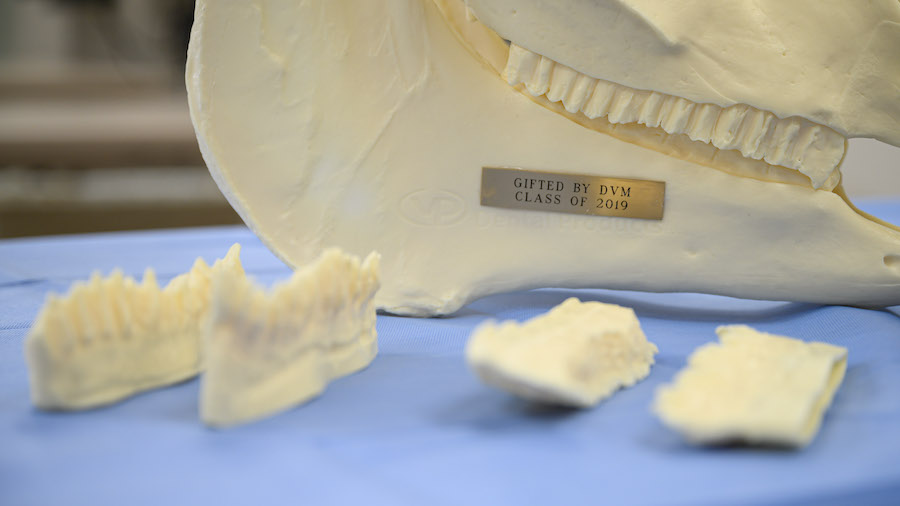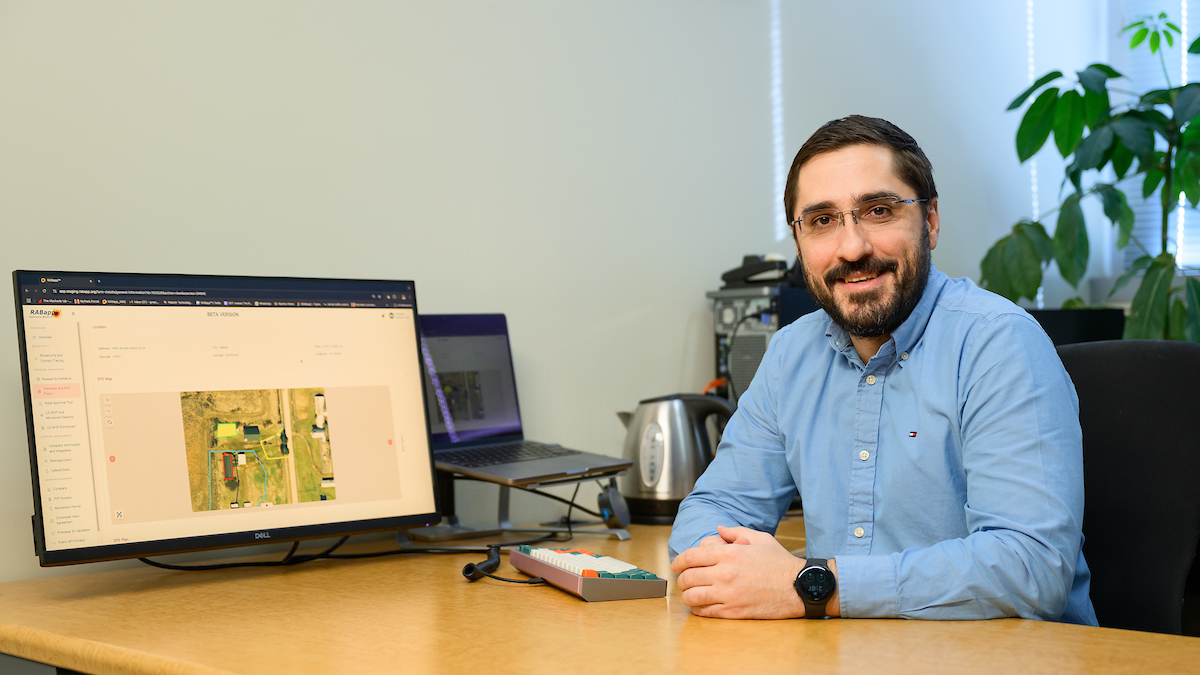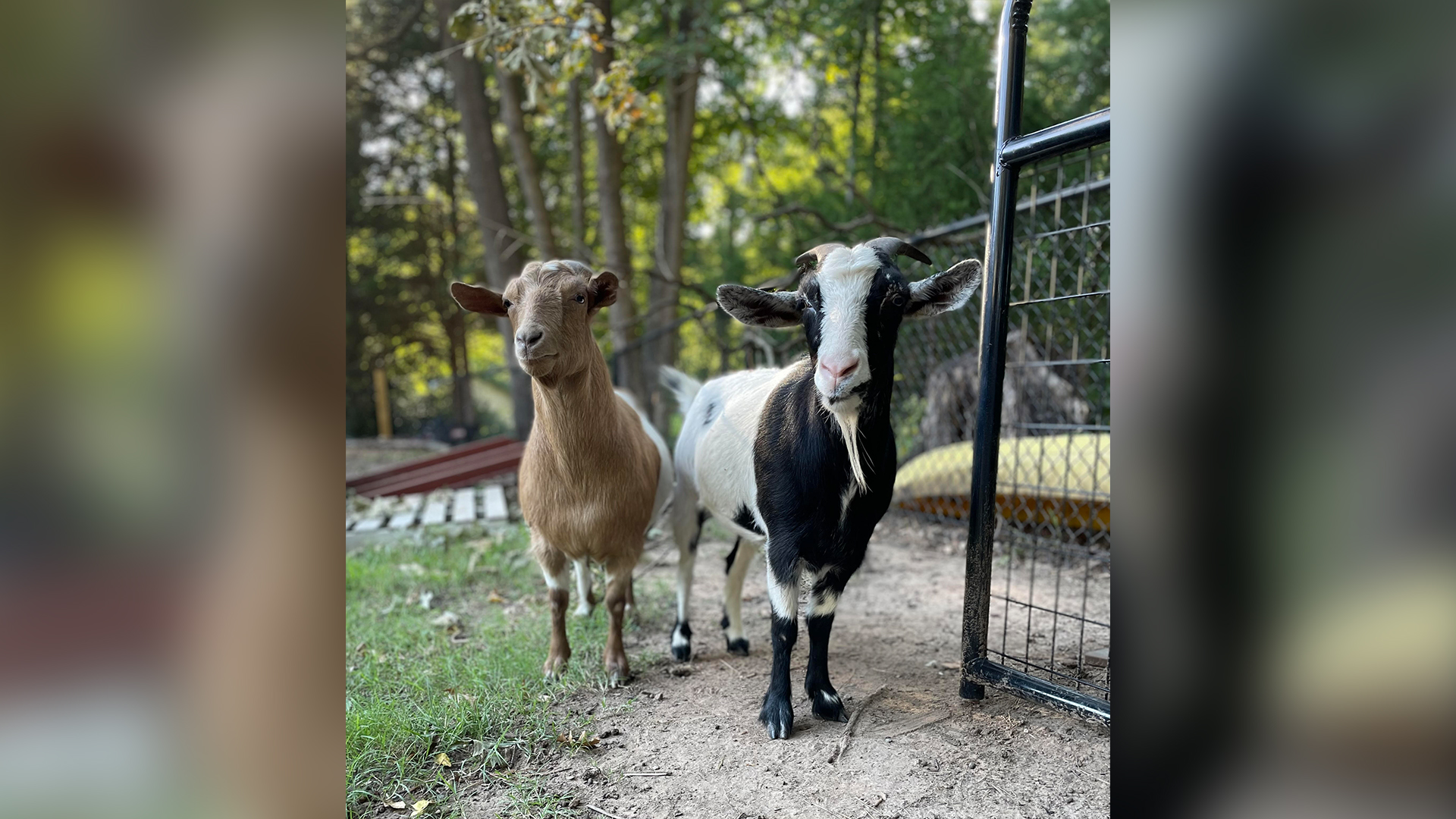Alums Give Back to SimLab that Gave Them So Much

The NC State College of Veterinary Medicine’s Class of 2019 was the first to use the CVM’s Simulation Lab — and they loved it. The students appreciated it so much that they gave a generous parting gift that has been used to purchase even more realistic models for the lab, which helps train future students on common yet important surgical techniques.
The SimLab lets students have realistic, simulated veterinary experiences, typically with animal models. All CVM students can practice medical procedures, such as inserting tubes, giving injections, making incisions, stitching up wounds and locating organs.
The donation came as a complete surprise to Abi Taylor, general practice clinical assistant professor and the SimLab’s director, who says she couldn’t be more grateful to the 2019 graduates.
“They were trailblazers, and the SimLab has morphed into what it is today based on their feedback,” Taylor says. “That they would do this shows us how much they appreciated it and that they are as passionate as we are about it. It’s very rewarding and validates our efforts. It means a lot to us.”
Gaining knowledge from lectures and textbooks is only part of the training at the CVM. The SimLab is where students master the techniques of basic medical procedures by practicing on simulated patients and refining psychomotor skills such as hand-eye coordination. Some are sophisticated manufactured models, some are cleverly improvised by lab staff using whatever is readily available, but all are designed to give students the opportunity to learn the right methods of performing these essential activities.
Part of what makes the SimLab special to students is that in addition to the selective courses that take place there, the lab is also available to them to come in and practice their techniques when they have free time. This allows them to practice as much as necessary and receive expert instruction.

Not everyone learns at the same pace, and the SimLab makes it possible for each person to take the time they need to acquire these important skills. Taylor and her colleagues, Gail Druley, SimLab manager, and Kate Ryman Fiebrandt, lab technician, were delighted to see that many of the class members repeatedly returned to the lab to practice during all four years at the CVM.
“The SimLab has provided a number of our class with valuable experience and training which we believe to be important in our veterinary profession,” the Class of 2019’s Alexandra Carlson wrote in a letter that accompanied the donation. “This donation is a gift to reflect the gratitude we feel towards the opportunity to better our veterinary technical skills.”
Taylor and her colleagues were determined to put the donation to good use.
One of the tricky procedures students must learn is endotracheal intubation, inserting a tube into a patient’s trachea to administer anesthesia. The SimLab already has a sophisticated model dog head for learning how to do this with canines, but cats are smaller and even harder to intubate.
So part of the Class of 2019’s gift was used to order a model cat’s head and throat from a manufacturer in Germany. With another portion of the gift, a realistic model of a horse’s head complete with replaceable damaged teeth, now mounted in an expanded area of the lab. Here, students can practice filing teeth and restoring them to their proper function, just as they would do with real equine patients. The rest of the gift was used to order special equipment designed for left-handed students.
“Whether it was spending time in the SimLab or using the SimLab equipment, some of the most valuable skills I gained at vet school were from what the SimLab had to offer,” Carlson wrote. “The donation was meant as a thank you for what you have already provided us and a means to continue providing for future vet students.”
~Steve Volstad/NC State Veterinary Medicine


